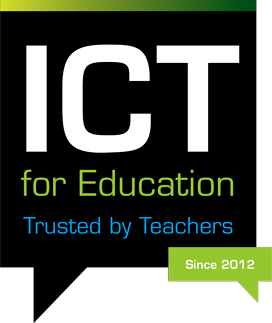It’s no secret that the pandemic has intensified the mental health crisis across the UK. Young people today are 50% more likely to have a mental health issue, and their teachers are usually the first line of defence. Educators usually notice the first symptoms of anxiety, as it directly impacts their students’ motivation to do well in school.
In fact, students feel more comfortable seeking help from their teachers than their families. Consequently, the pressure on educators has exponentially increased, as they are already time-poor.
These are all serious issues that can be prevented. Schools can take proactive steps to give students more autonomy over their studies, and foster independent learning skills. These strategies help students to manage their anxiety better, especially if it affects their schoolwork.
However, this doesn’t mean that the teachers’ workload should increase. By utilising learning technology, students can have more control over their own learning process, and teachers can organise their classes to adapt to their needs.
Here are four ways in which learning technology helps tackle student anxiety:
1. Have an overview of their progress
Giving students more control over the learning process can significantly help to reduce their anxiety in the classroom, as it enables them to easily track where they are in their learning at any point. s. Often, students don’t really understand how much progress they’ve made, which can be discouraging.
Specifically, in a learning platform, students can see how many lessons they have completed, how many lessons they have until the next one, and what they must do to improve their grades. Of course, teacher feedback is also a great way for students to evaluate their own progress. All teachers have to do is leave comments attached to student assignments, which students can revisit anytime they need some encouragement or hints for improvement. Additionally, online lessons have a great advantage since students can review the topics and tasks as many times as they requireand take practice quizzes, which is great for self-assessment and self-reflection.
Gamification is not only a fun learning experience, it also has a practical side. Students can measure learning progress by points and badges earned, not just percentages and grades.
2. Make learning tasks and deadlines clear
At a basic level, calendars allow students to see timetables and keep track of deadlines for handing in assignments. Another effective way learning technology alleviates anxiety is by showing to-do lists, such as “Homework due tomorrow” or “Exam next week” which makes it much easier to prepare in advance. Teachers don’t have to constantly remind them of homework at the end of each class.
Each online class also contains important information: a class calendar, a news feed for announcements, a group where students can ask questions related to classes, a syllabus, etc.
Teachers can create homework assignments in advance but only give them to students when appropriate.
These activities are harder to organise without technology and take much more time for teachers and students.
3. Offer more teacher support
Individual support is hard to offer when teaching 20 students or more. However, technology can step in and help educators give students and their families more support as needed. For example, they can keep constant communication outside the regularly scheduled classes by answering questions that students post online, making important announcements, and even reaching out to parents.
Family involvement helps students since they have more support at home and school. Teachers can keep parents informed about their children’s progress and give direct suggestions for how to help them, especially if they struggle with a particular subject.
Since an online platform makes it easier for teachers to keep track of quizzes, essays, and other types of assessments, they can also use compassionate grading or flexible grading for students who are currently dealing with anxiety or other issues. This includes giving students an option to rewrite an essay, do extra credit work, or extend deadlines if they need more time to complete their tasks. These options still require students to make an effort, but it’s a gentler and more empathetic way to help them succeed.
4. Offer individualised learning
Students who struggle to organise independent study or allocate time for homework are more likely to feel anxiety around these tasks. This leads to procrastination, which only exacerbates the problem.
Learning technology allows teachers to set up personalised learning paths in which students work towards a goal, such as completing “Introductory Algebra” or learning how to write a great essay. Even better, learning paths don’t look the same for everyone — a student may prefer watching a tutorial video, while others may enjoy reading an article, so two students won’t see the same content.
An even more advanced solution is learning recommendations, in which an edtech platform recommends learning content based on learning gaps and goals. Students get recommendations proactively, so all they have to do is access a platform and choose the best learning recommendations from a list based on their previous knowledge and preferences.
Tackling student anxiety with education technology
Student well-being should be a priority for all schools. One of the ways in which teachers can support students is by promoting independent learning skills and giving them more control over their own learning journey. Education technology offers students an overview of their progress in classes, displays timetables and deadlines, enables teacher support, and also focuses on individualised learning so that students will feel empowered throughout the school year.


